In this post: 5 tips for how to teach your kids basic Spanish phonics and why phonemic awareness is so important for foreign language learning.
Are you looking for quality resources to teach your kid basic Spanish phonics?
Discover the best music, worksheets and programs for building phonemic awareness and why it’s so important for learning languages.
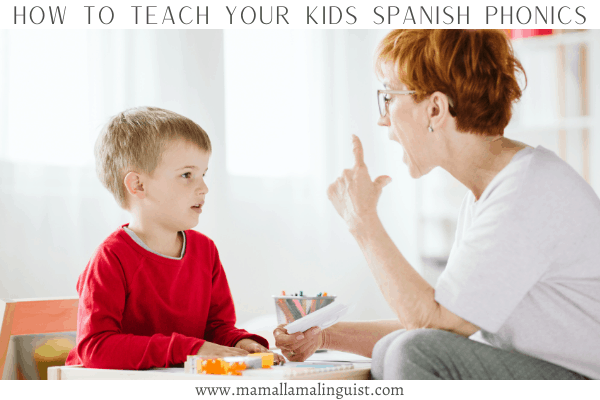
It may sound surprising, but after attending years of Spanish language classes throughout middle school, high school, and college, I was never explicitly taught phonics. I remember singing the alphabet song once or twice, but that teaches you letter names, not necessarily the sounds each letter makes.
It is interesting that at the same time, we put so much emphasis on pronunciation in language classes. So much so that I think many people are afraid to say anything at all! Without understanding the smallest units of sound in the Spanish language, how can we possibly be expected to know how to pronounce new vocabulary?
In Spanish class, I remember feeling extremely self-conscious and like I was never able to pronounce anything exactly right. I had no confidence in my speaking ability and would immediately get nervous at the mention of group activities or scripted partner conversations.
Teaching myself basic Spanish phonics as an adult changed everything. When I finally understood that the letter “I” in Spanish only says /ee/, and that while the letter “A” in English makes three sounds, it only makes one in Spanish /ah/ (as in “father” or “wash”), my ability to read and speak aloud improved immensely.
It gave me the confidence to read books to my children and practice saying words out loud that I had never heard pronounced before. It meant that I knew to read “imagina” as ee-mah-hee-nah (rather than ih-ma-hee-nah). Little lightbulbs started going off everywhere, and it suddenly made sense why words I had been taught by memorization in school sounded the way they did.
Related Post: How to Raise a Bilingual Child
Table of Contents
Spanish Phonics Overview
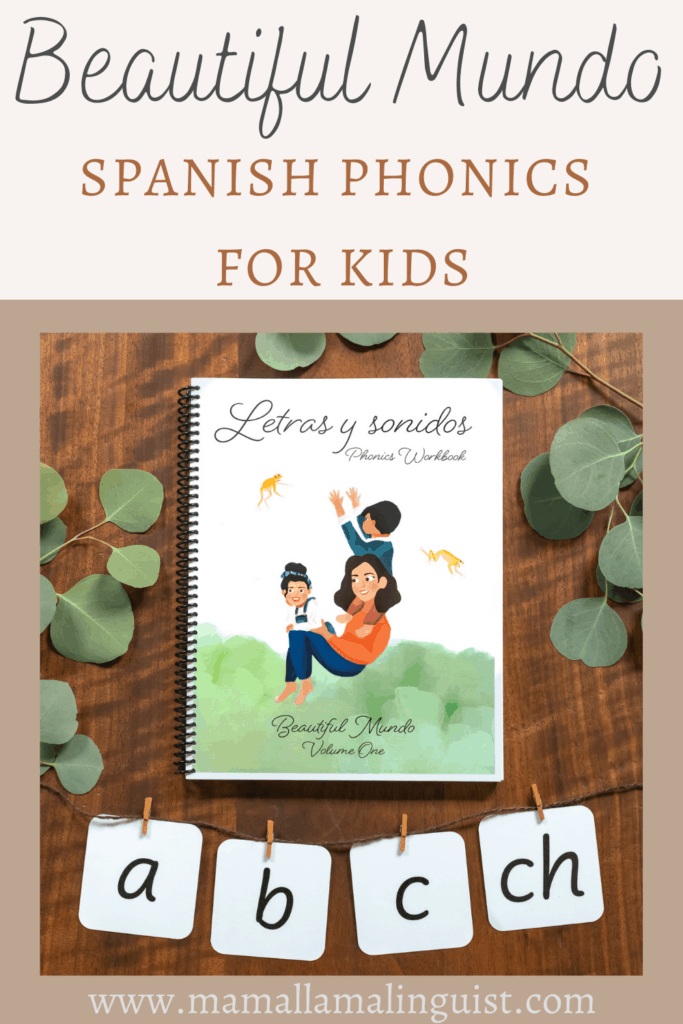
Learning the sounds of the alphabet in Spanish is one of the most important things we can do to give our children a strong foundation for learning to read and write. Phonemes are so important because they are the sounds that help us distinguish one word from another.
Phoneme awareness has been proven as a predictor for overall reading and spelling abilities for monolingual Spanish-speaking children and Spanish/English bilingual children alike (Branum Martin and Bravo).
By teaching our children Spanish phonics, regardless of their age, we are giving them the best possible start to their language learning journey. For me, it really was the single most important thing I did to boost my confidence in speaking and reading aloud.
There are some similarities between teaching phonics in English and Spanish, but there are also some notable differences.
Personally, I think learning to read in Spanish is actually easier than English! Each vowel in Spanish only makes one sound, compared to the three or four sounds some vowels make in English.
Introducing vowels first is important because it allows us to build a base for introducing open syllables along with the new consonants. For example, when introducing “la letra m” we would also want to introduce the syllables, “ma, me, mi, mo, mu.”
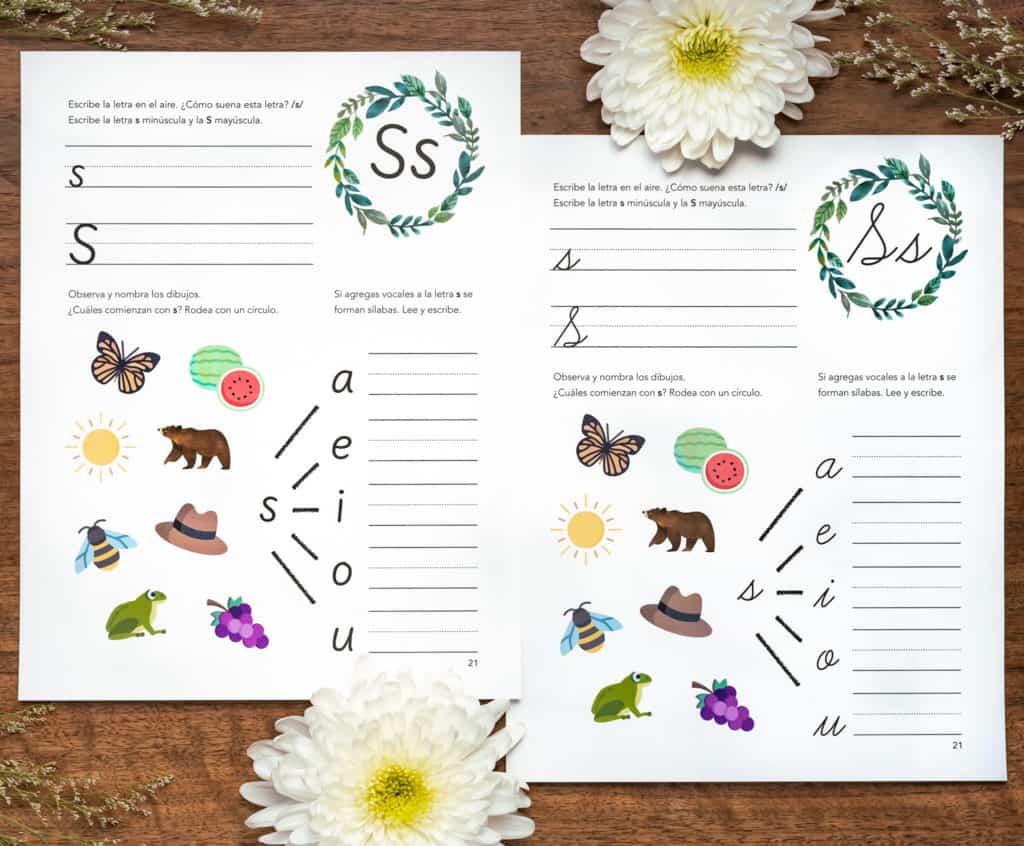
Five Ways to Teach Spanish Phonics
Use Songs and Rhythmic Phrases
Music is one of my favorite language learning tools and introducing letter sounds with a song is a great way to bring fun times and joy into phonics.
My absolute favorite album for this is Canta las letras by 123 Andrés. They have a song for every sound in the Spanish alphabet and it’s a great way to learn new vocabulary too!
As an added bonus, their lyrics are available to print out for free on their website.

Using rhythmic phrases and chants are also fun ways to learn and remember letter sounds and vocabulary.
When introducing the letter “O” for example, we can say “oh, oh, oreja”and point to our ears as we say the word “oreja.”
Introduce Letters and Sounds with Sign Language
Adding a sign with our hands as we learn about letters and phonemes in Spanish is a wonderful way to engage the right side of our brains.
Actions, movements, and gestures are all great ways to “click on” the right brain, which helps us to internalize information rather than just memorizing it with the left side of our brain.
My oldest daughter had learned ASL alongside English letters and by tying ASL into her Spanish learning, we were able to use sign language to connect the two languages.
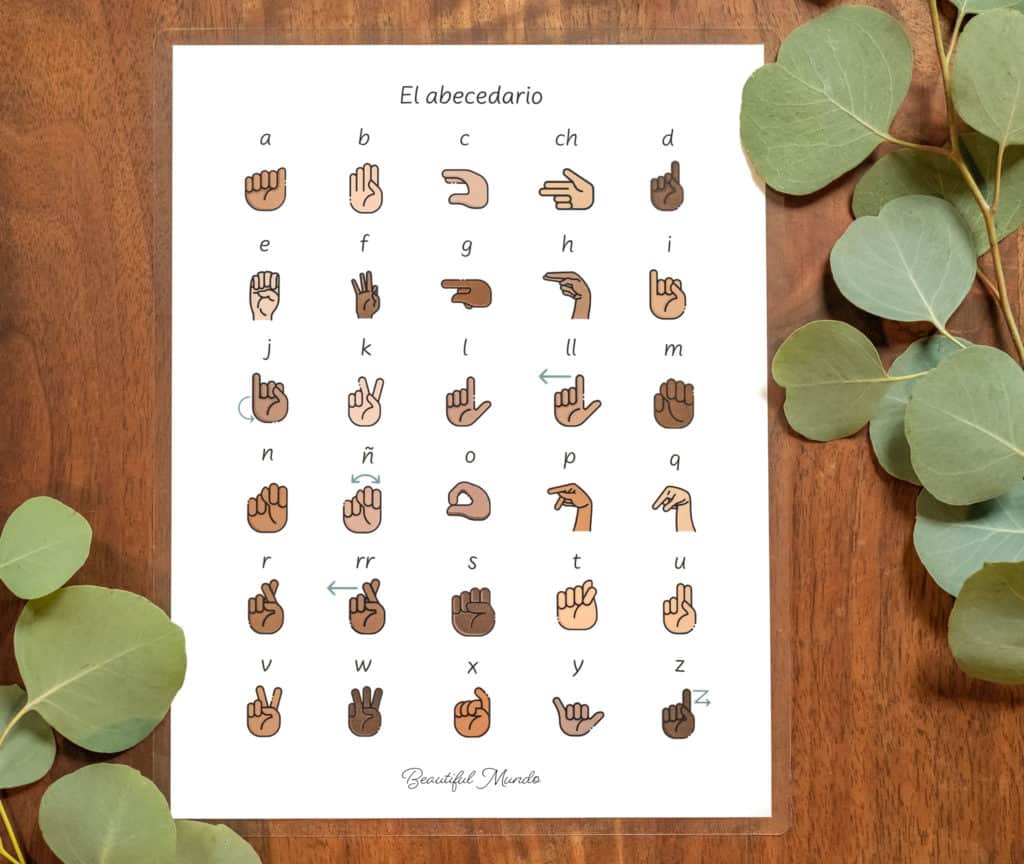
Alphabet Boxes
Setting up a simple cardboard box to display the letter you are learning about is a fun way to engage with it in a more hands-on way.
Feature the letter prominently and collect toys or items from around the house that begin with that letter to display in the box for a week.
Alternately, you could turn this project into a poster, or use a whiteboard or fridge to display drawn and/or printed images of things that begin the letter you are working on.
Creating an alphabet box together during the week has been a really fun way for my kids and I to interact with a specific letter and learn some new vocabulary too!
It’s also great inspiration for word chants. Leave the alphabet box near your kitchen table and you might just hear your kids shouting “¡ah, ah, abeja!” over breakfast!
Picture and Word Sorts
Word sorts are an excellent activity for building literacy and helping children recognize common spellings patterns in words.
Essential Spanish Words Sorts by Laura Woodard and Amy Coit, from Really Good Stuff, has been my favorite resource for this. I’m not affiliated in any way and personally happen to find this resource helpful.
It includes everything you need for picture and word sorts, as well as detailed instructions on how to use them. Only one copy is needed per family and you can simply make a photocopy of whichever sort you want to work on. There are even several games included as well!
My oldest insists on coloring and cutting the words out all by herself and enjoys them so much that it’s the first thing she asks for when I introduce a new letter.
Word sorts might not be every child’s favorite thing, but there is a chance that they might love them, and it’s worth trying out.
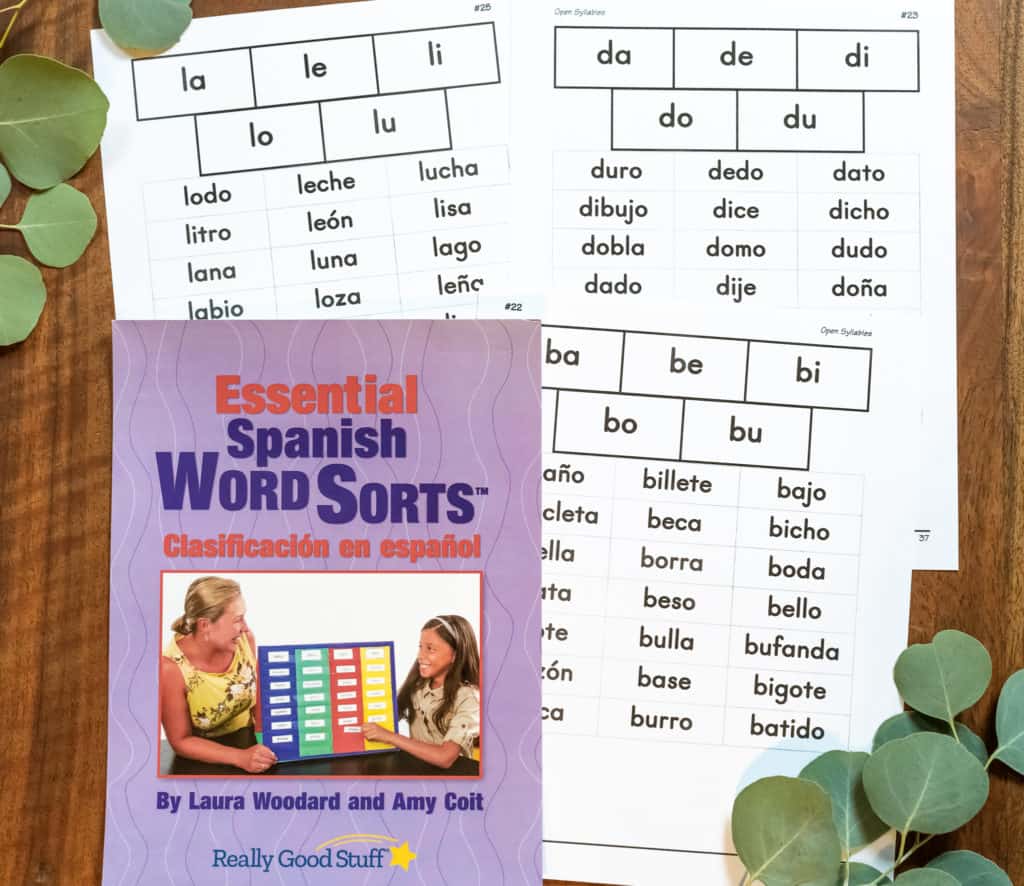
Blending Sheets
Finally, blending sheets are excellent hands-on tools for children to physically connect with the sounds in syllables, and then later the syllables in words.
This is really a very simple thing to do, but it helps immensely to see the parts of the word first before they come together as a whole.
Understanding syllables in Spanish is so important because it lays the groundwork for knowing where accent marks belong in words later on.
Here is the basic format for a blending sheet:

You can also act out a blending sheet simply by using your hands. Hold up your left hand as you say the sound /p/, then your raise your right hand as you say /a/, and bring both of your hands together as you say “pa.” This works for blending syllables into words too!
Phonics is the Best Foundation for Learning a Language
Memorizing vocabulary lists is far from the most effective way of learning a language. Knowing how to sound out words, and having the ability to register phonemes as they are spoken, should be the foundation we strive to build for learning any language.
Phonics instruction isn’t just for kindergartners or young children first learning to read! I wish that phonics had been a part of my language learning journey from the very beginning; it would have made all the difference.
Related Post: How to Teach your Kids Spanish
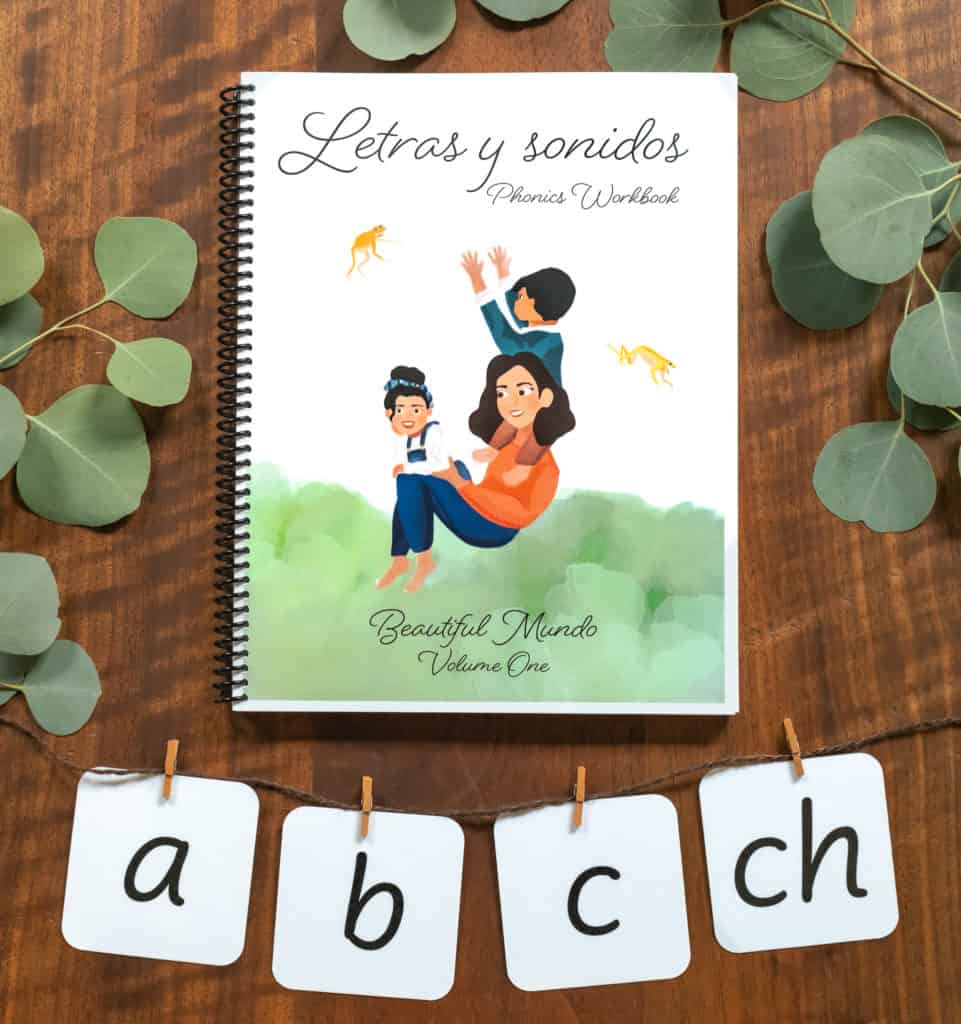
When I wrote Beautiful Mundo Volume One, one of my primary goals was to find a way to incorporate basic phonics.
Letras y sonidos is the phonics workbook I created to meet that need. Rather than introducing the alphabet in a traditional A-Z order, it was carefully and intentionally designed to introduce vowels before consonants, and then move through consonants in a way that staggers and mixes the types of articulation required to produce the sounds.
The worksheets are written entirely in Spanish, but there is an answer key with translations included in the back.
For each letter, my husband sketched animals whose name begins with the letter of the week to bring phonics learning to life.
We were determined to include as many animals native to Latin America as possible to create an opportunity for exploration and research.
Letras y animales is a free printable coloring book on my website for younger learners not quite ready to dive into the phonics workbook that simply features the letters and corresponding animal illustrations.
Teaching phonics should never feel like a chore; it really is all about having fun and finding the joy in the process!
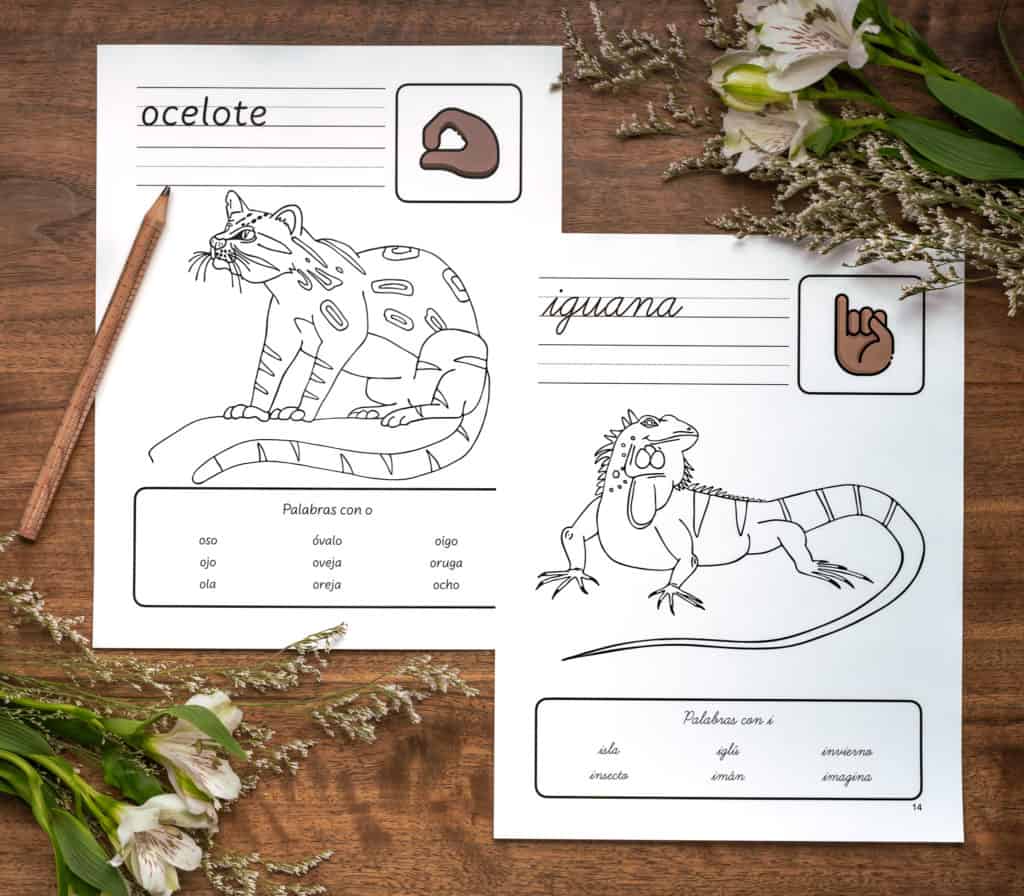
I would like to leave you with a few uplifting words, especially if you are a non-native Spanish language learner starting from the very beginning.
Learning to read in a language that is new to us can feel like a daunting task, but I would argue that rather than letting this challenge hold us back, we can embrace it and it will actually enhance our children’s education.
By shifting my own perspective, I realized that my children were gaining important skills as they watched me struggle through those first few books.
They heard me slow down and sound out words I was unfamiliar with. They saw me have patience with myself as I restarted the sentence and tried again.
They listened as my reading gradually improved and I was able to start adding more character into my Spanish reading voice.
Ironically, these are exactly the skills I dream of watching them develop as they learn to read in Spanish too!
Perfection is not required to be a good teacher and example for our children.
Sometimes they laughed at me or scrunched up their faces, but children have this light they bring to learning and I always feel like they are rooting me on.
Each and every little thing we learn is cause for celebration!
References
- Branum-Martin, L., Mehta, P. D., Fletcher, J. M., Carlson, C. D., Ortiz, A. A., Carlo, M. S., & Francis, D. J. (2006). Bilingual phonological awareness: Multilevel construct validation among Spanish-speaking kindergarteners in transitional bilingual education classrooms. Journal of Educational Psychology, 98(1), 170–181.
- Bravo, L., Villalón, M., & Orellana, E. (2006). Diferencias en la predictividad de la lectura entre primer año y cuarto año básicos. Psykhe, 15, 3–11.

Emma Butterfield Corbet is the author of Beautiful Mundo, an immersive curriculum for Spanish language learning through literature, music, play, and exploration of the Spanish-speaking world.
She is the mamá of four little ones and a native English speaker who deeply values multilingualism and has a great appreciation for the cultures of our world.
As a non-native Spanish language learner, Emma makes it her mission to work with native Spanish-speaking artists, students, and educators from around the world to help create and edit Beautiful Mundo’s learning resources.
Above all, she believes that raising children in a bilingual home is a worthwhile and beautiful journey to be on, and we have the power to fill it with joy and meaningful moments of connection, regardless of our own unique heritage and background.
